Greg O’s Garage: The Holman Moody Falcon Challenger III’s extensive body modifications
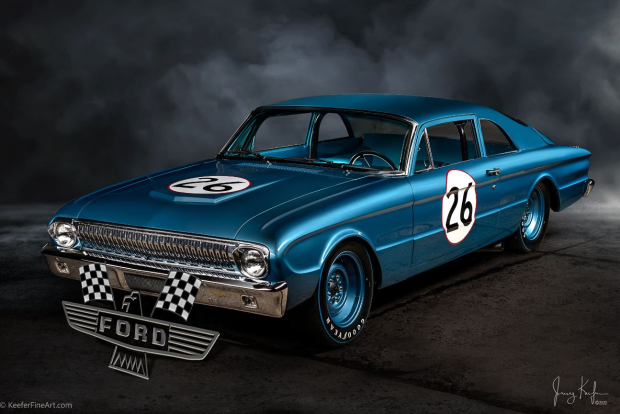
When Holman Moody built the Challenger III, extensive body modifications were necessary.
In the late 50's/early 60's, Ford was back to racing and with the help of Holman Moody, they set their sights on Ferrari.
Eventually, they gave Enzo a run for his money with Shelby and the GT40, but before that, they thought that going after Ferrari with a small 'grocery getter' would be an embarrassment to Ferrari.
Enter famed Ford race team Holman Moody and the humble little Ford Falcon.
Greg O.
Introducing The Falcon
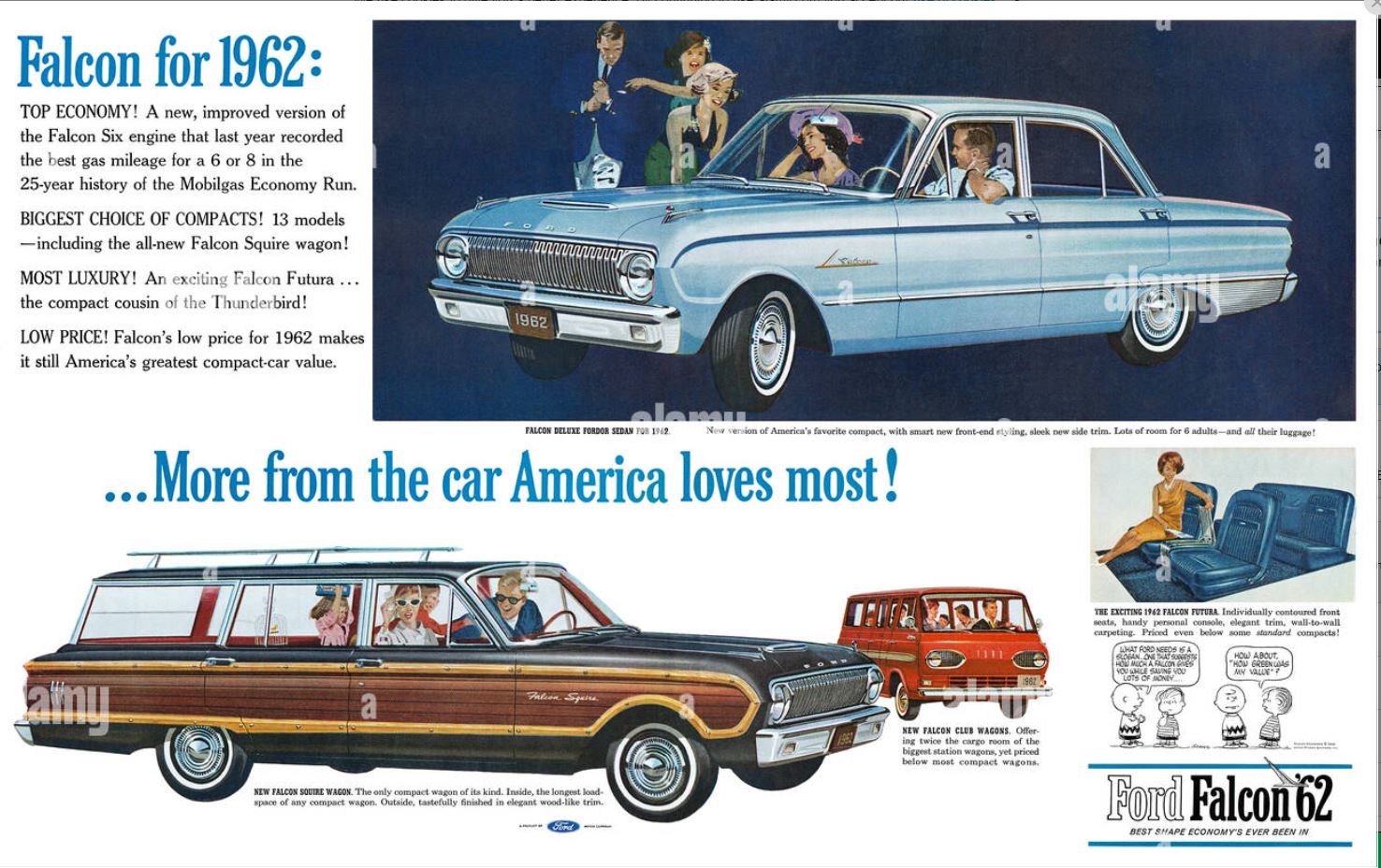
In 1960, after years of American land yachts, Ford introduced a new type of smaller car to the market. The compact car section of the market was just beginning, and Ford was on the cutting edge introducing the compact Falcon.
With a small, fuel-sipping 6 cylinder and an extensive array of body configurations, the 1960-1963 1st generation Falcon was an instant hit. Two and four doors, convertible, wagons, Ranchero pickup, Econoline van, and even eventually a unique sedan delivery, there was a model for any family's needs and tastes. And with varying trim levels, one could purchase a basic Falcon all the way up to the luxury Futura package.
Eventually becoming the basis for the upcoming 1964 1/2 Mustang and dozens of subsequent Ford models, the Falcon had a great 10 year run with 3 design generations from 1960-1970 finally being replaced by the Ford Maverick in the '71 model year.
The Falcon nameplate lived on for many more years in the land down under turning tens of thousands of Australians into Falcon fanatics for decades.
Profile
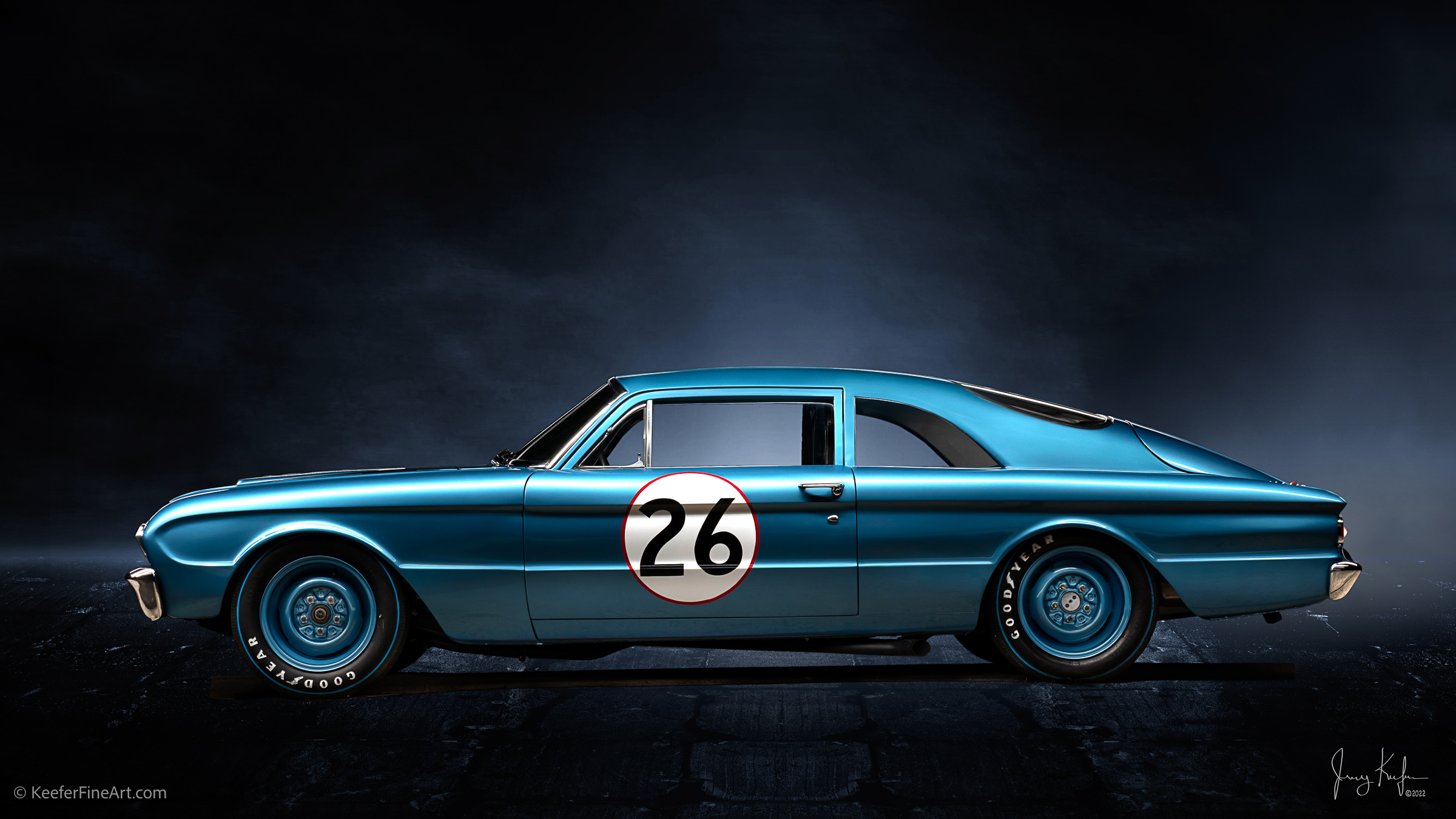
In the early 60's, Ferrari was dominating with their 250 GTO's and Ford wanted to go after them and get back into racing in a big way.
Race team Holman Moody was no stranger to Ford, modifying T-Birds and Galaxies on the track. So, Ford approached H/M to build a fire-breathing monster from their new, little compact 'grocery getter'. After building Falcon Challenger I & II, they set their ambitions a little higher with the Challenger III. To make the family car a little more slippery in the wind, they knew extensive body modifications were in order.
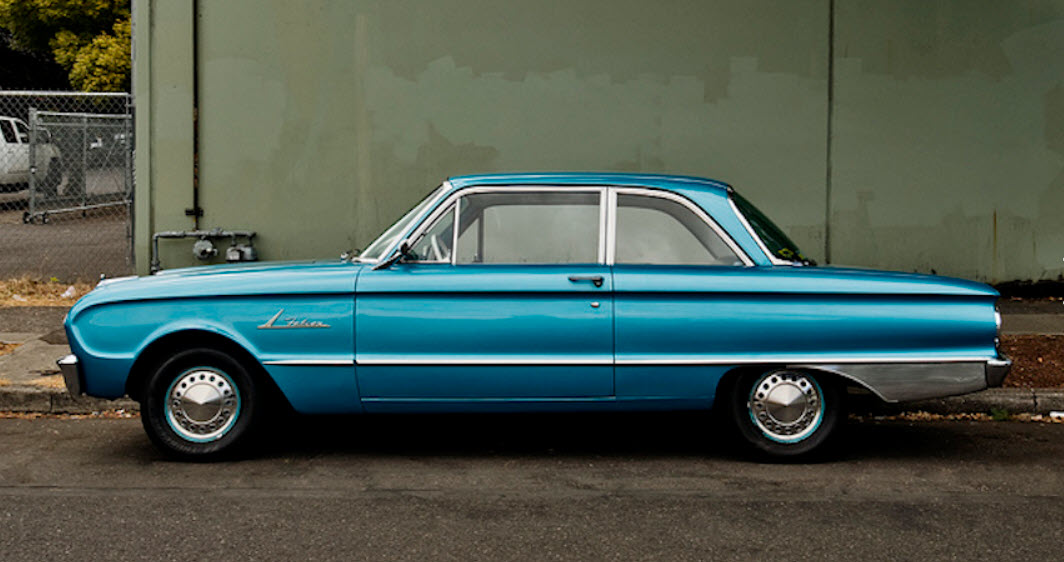
Removing 3 inches horizontally from the center section of the body, and chopping the roof top another 3 inches, the small Falcon was a full 6 inches shorter than the factory Falcon. Adding the aluminum fastback to the car was the final piece to make the boxy compact slice through the air.
The Challenger III photo above in comparison to the factory profile at left gives an idea of just how low the car became. In fact, the car had a shorter profile than a Porsche 356 of the day.
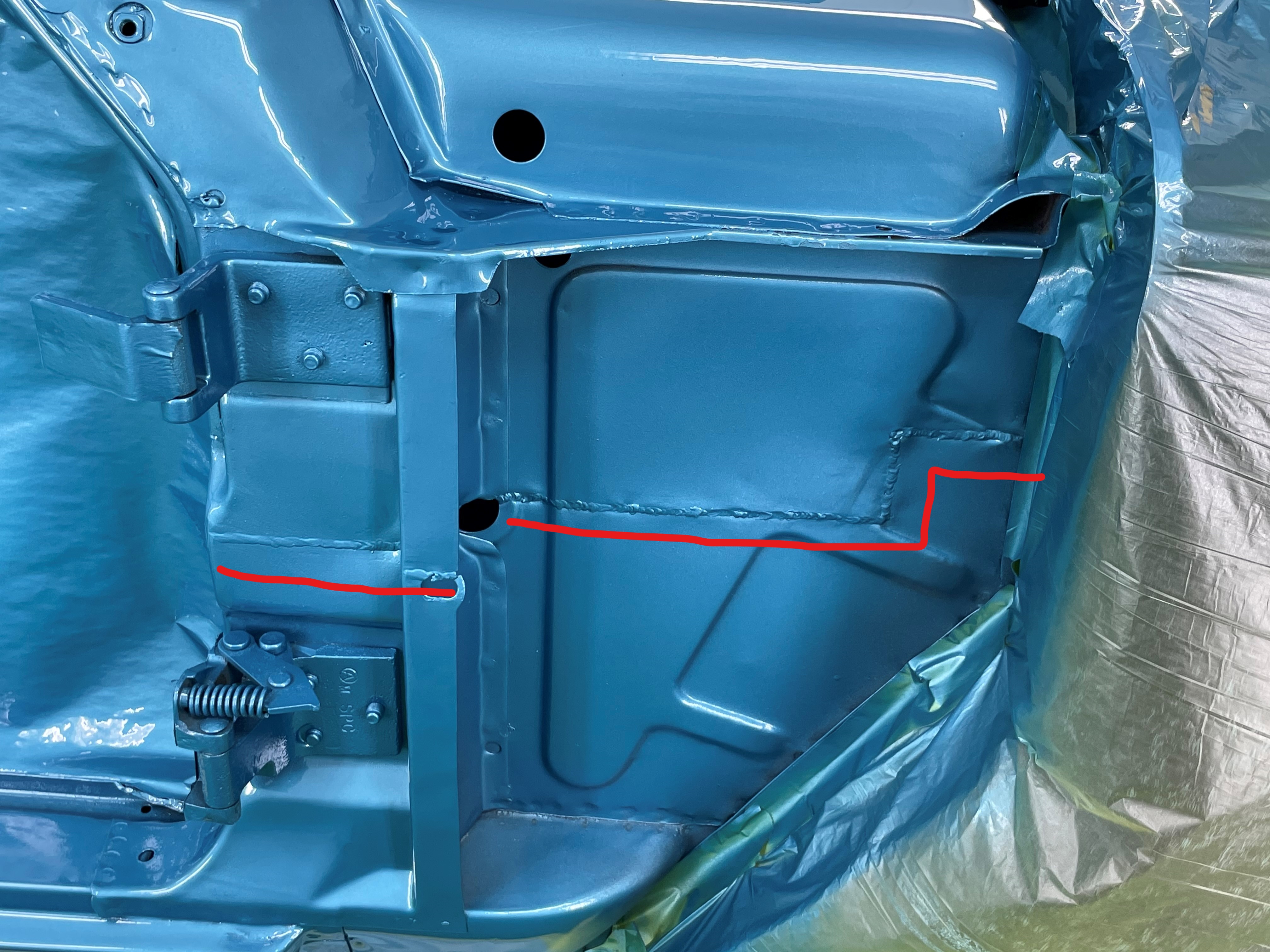
During the Challenger's restoration, one can see the horizontal welds showing just where H/M's master metal fabricator Ludwig 'Lujie' Lesovsky removed the 3 inches behind the front fenders. Red line markings on the photo underscoring said welds.
Chopping a vehicle vertically in half to shorten or lengthen it is child's play compared to the amount of work it means to do the same horizontally. Lesovsky was truly talented, especially when it came to reproducing chopped doors and fenders recreated in aluminum for weight.
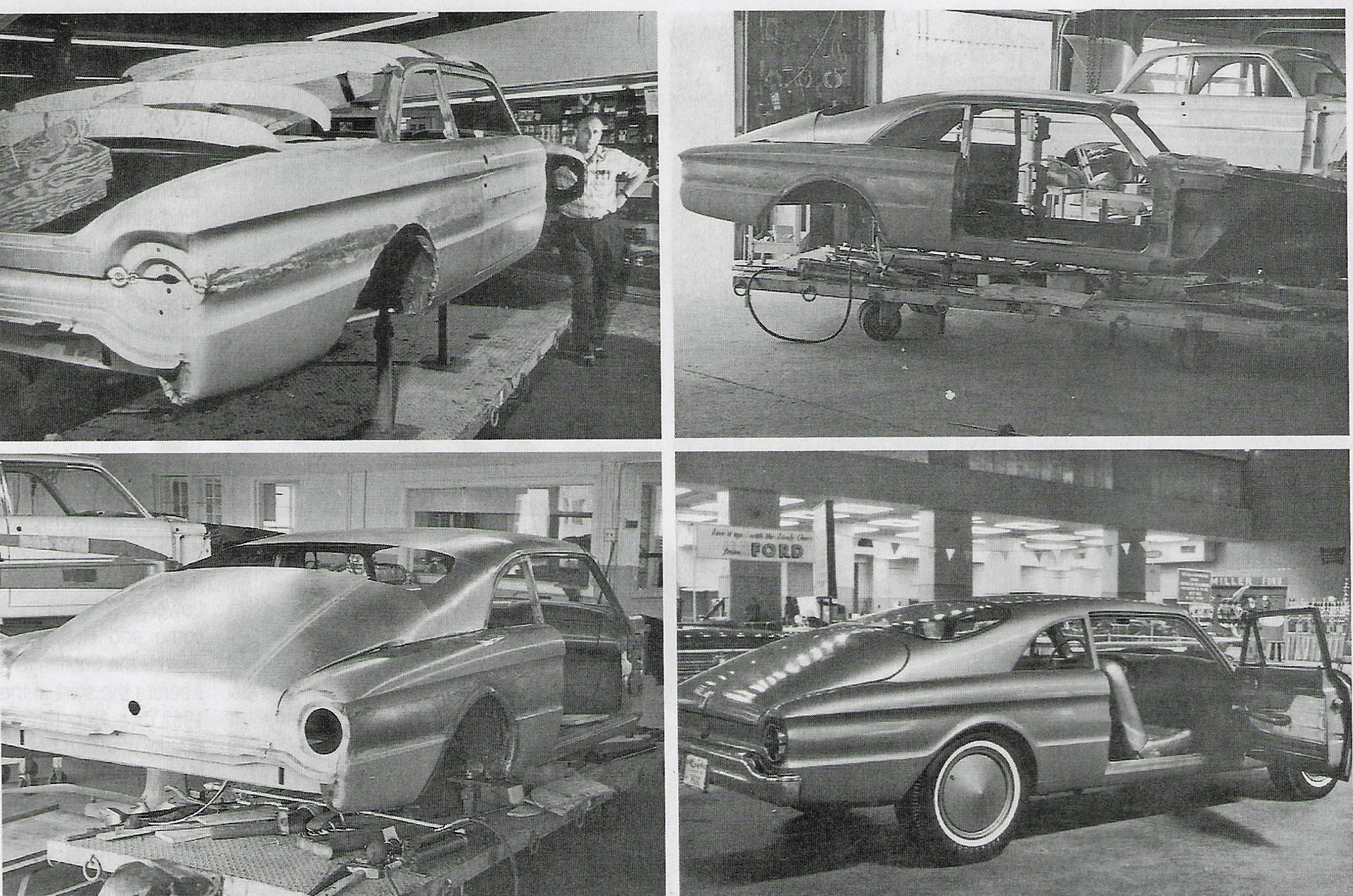
Challenger III under construction.
Rear End
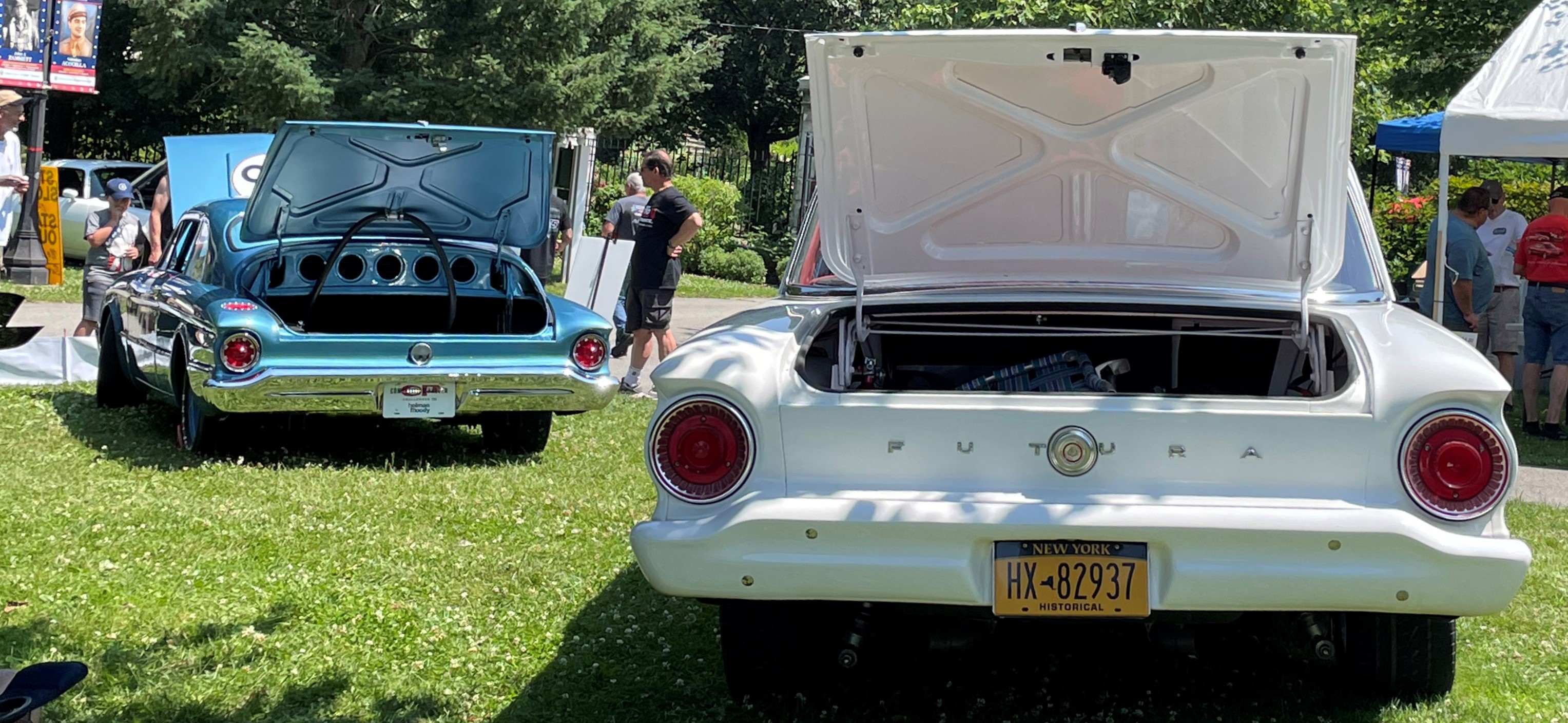
In particular, the nose and rear end of the car tend to be even more challenging (no pun intended) to the metal fabricator.
Seen here at the recent Gold Coast Cruisers Waterfront car show, courtesy of photographer Gram Spina, the rear end differences between the Challenger III and an unmodified 1962 Falcon Futura can easily be seen.
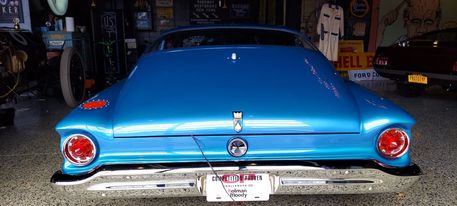
Challenger III
Aside from the lower and wider appearing rear end, the fastback changes the rear view drastically.
Smaller Ford tail lights from an earlier model Ford needed to be fitted to fill the much smaller diameter area.
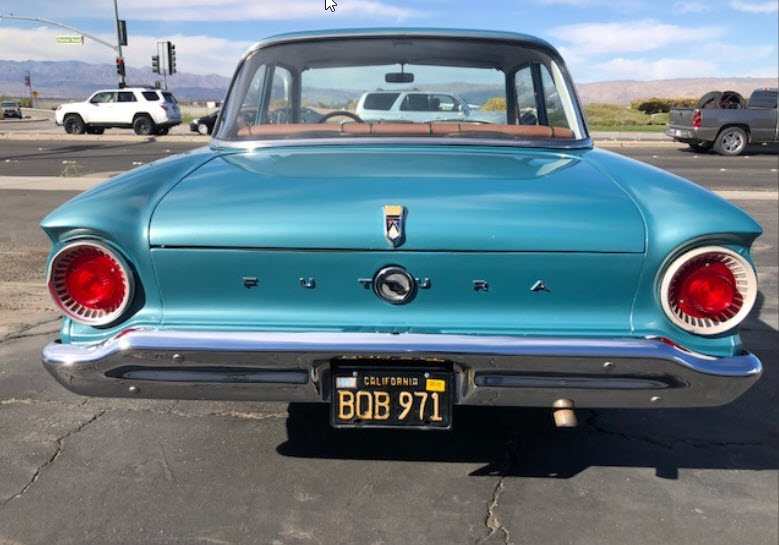
Factory 1962 Falcon Futura
Front End
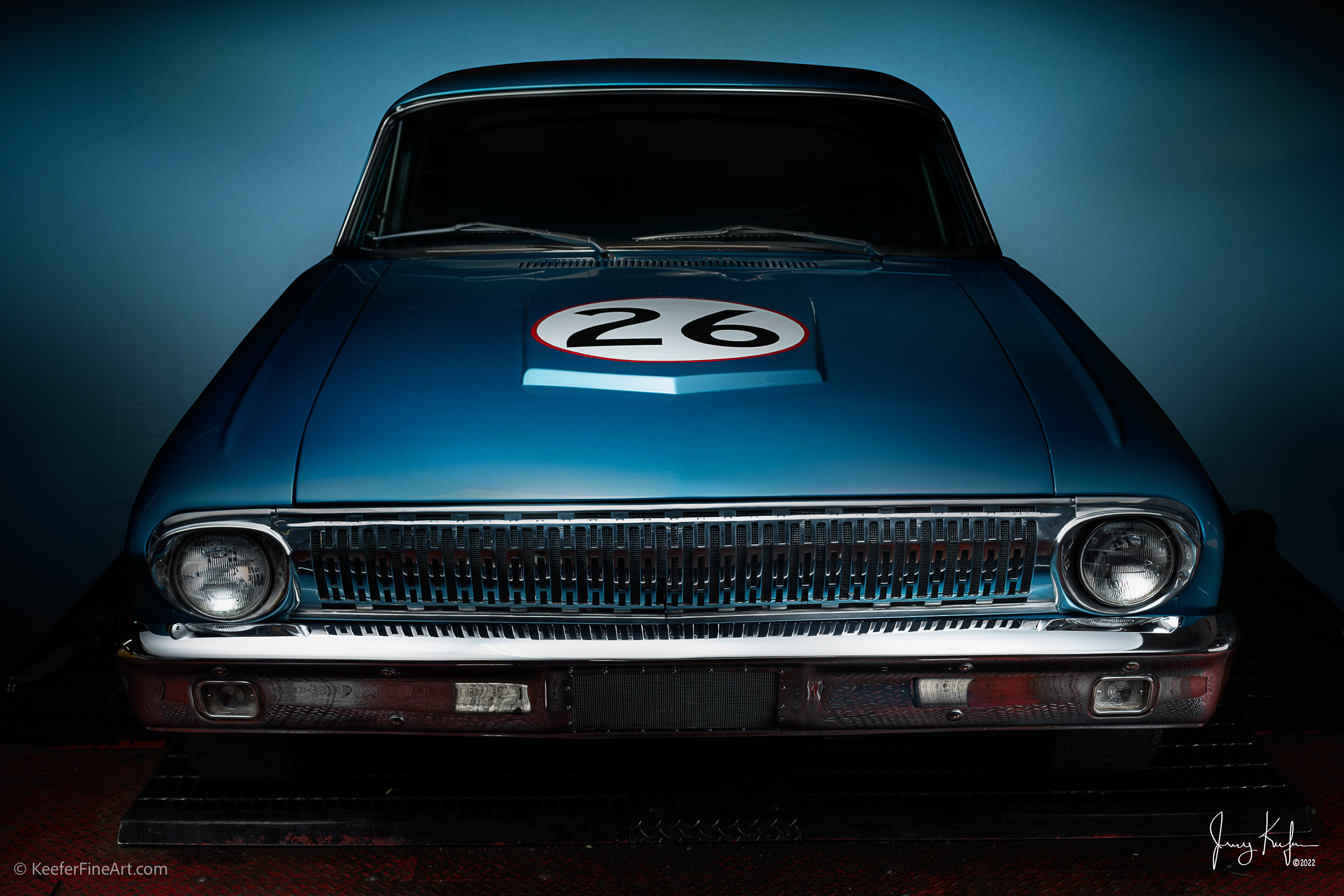
Possibly being even more difficult is the front end with particular extreme attention to detail in the sectioning of the grill.
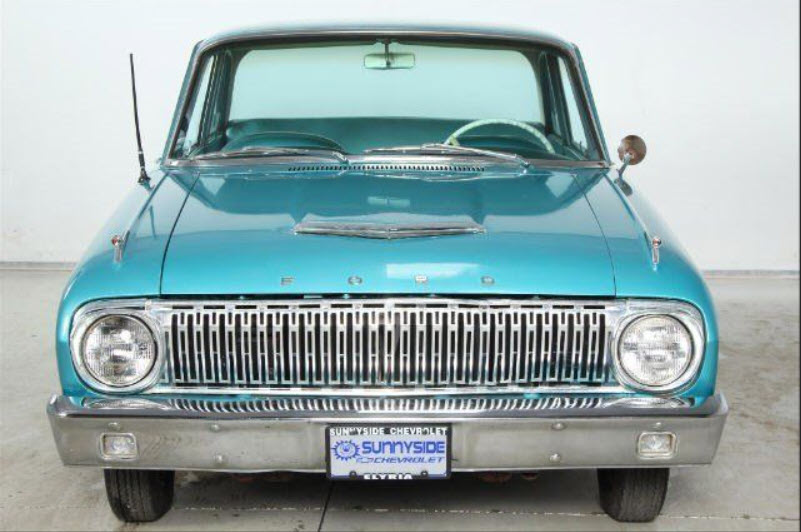
Factory 1962 Falcon Futura front end.
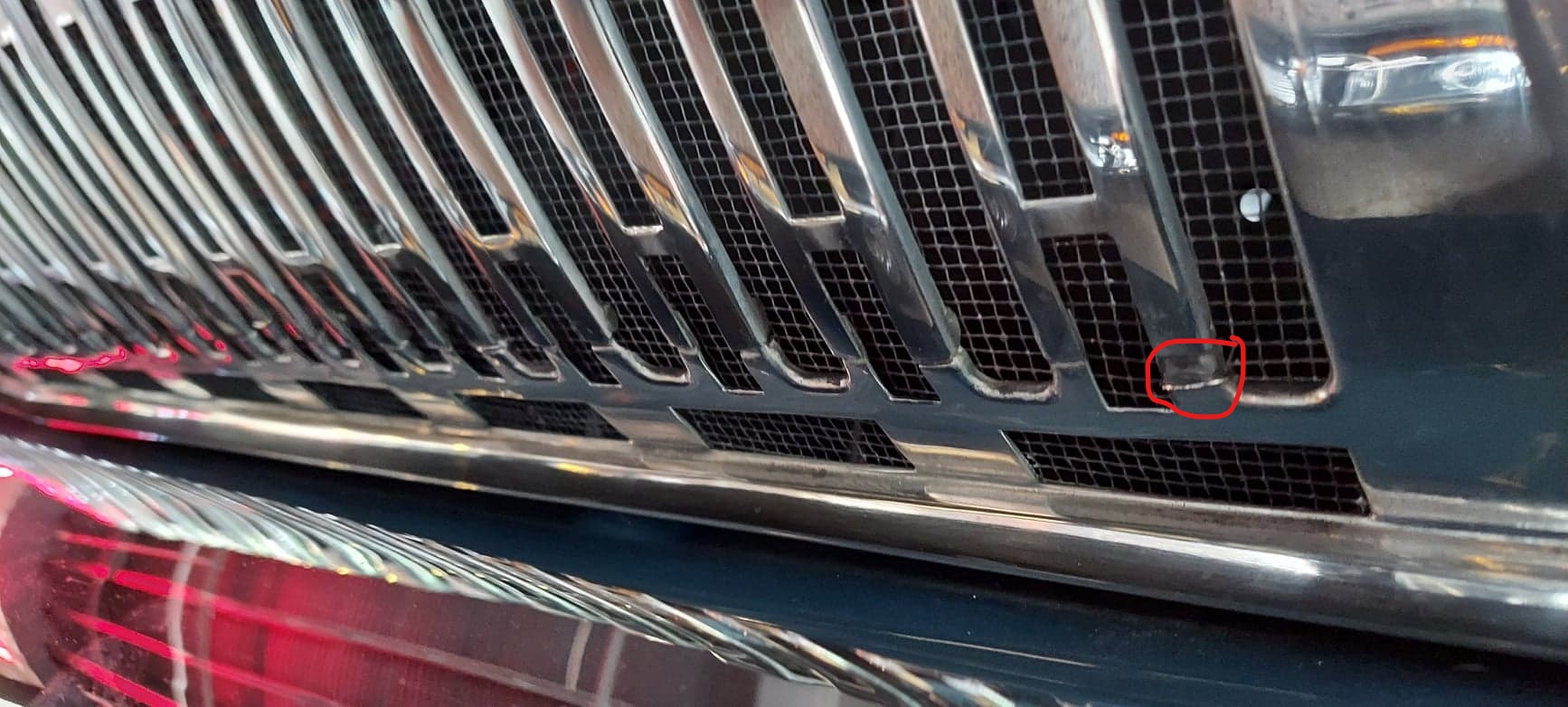
The red circle indicates the spot in which the grill was cut, inches removed and pieced back together. Each upright within the grill receiving the same treatment as seen.
The tediousness of this makes one wonder why H/M went through the trouble for something so trivial on a race car. But as this was also a design study for a possible limited run of about 100 cars by Ford, it was necessary to see what that would have looked like to Ford.
Unfortunately, the Falcon program was severely cut with the introduction of the Mustang, so a limited run never came to fruition.
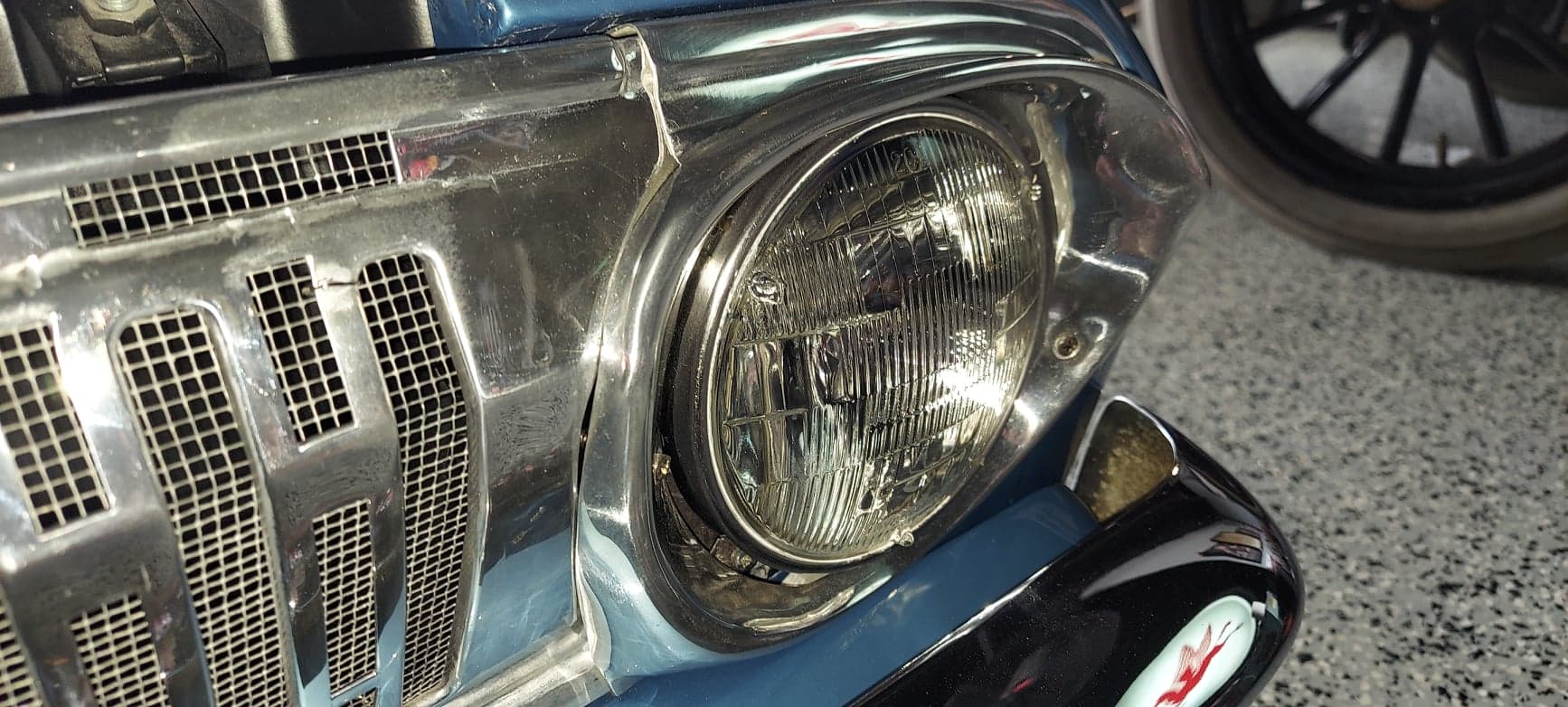
The diameter of the headlight bezels was also reduced, and a smaller headlight was required. H/M's answer was to use the smaller low beam from a quad lamp set up and not have high beams.
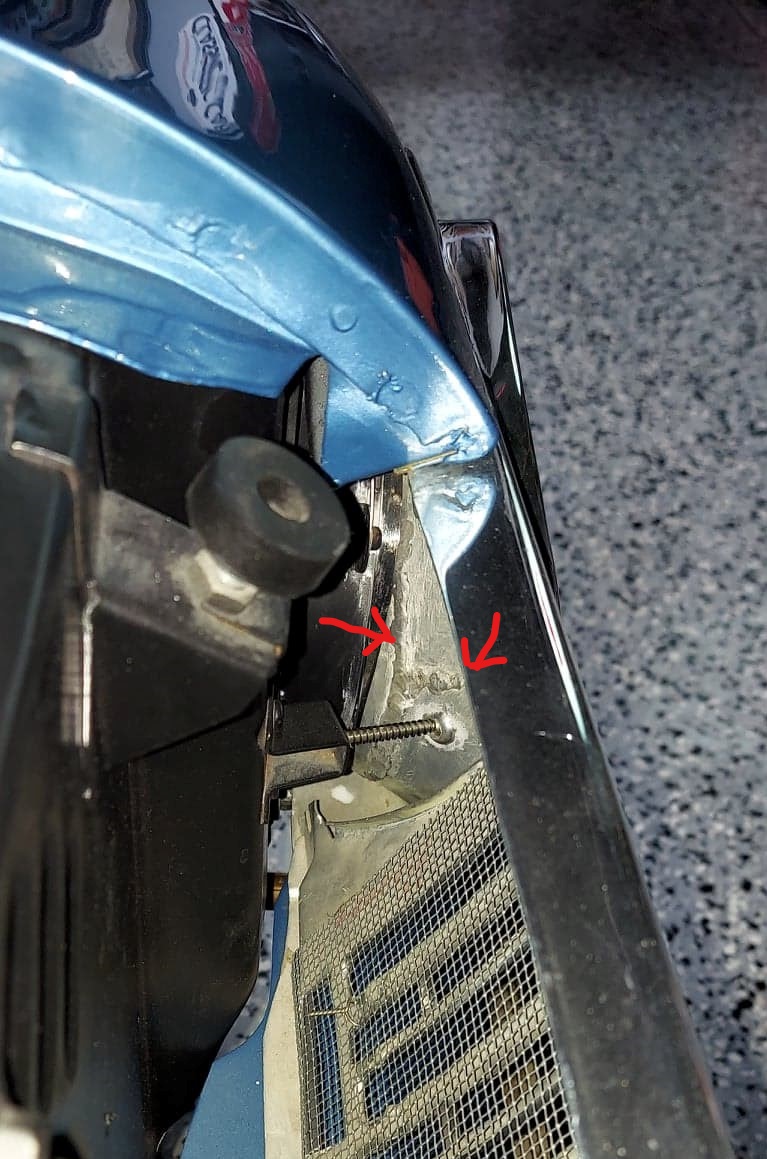
The inside of the bezel uncovers the amount of work needed to reshape their smaller size. Red arrows showing the welds of the many sections pieced together to form the new opening.
3/4 View
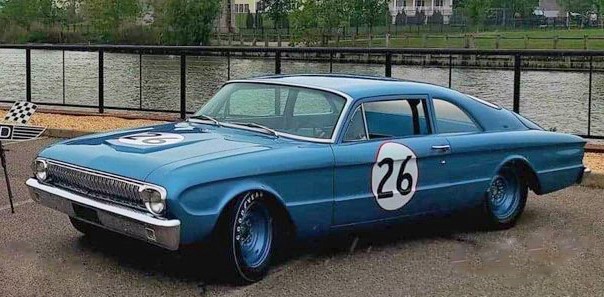
Side and 3/4 views also display the reworking of the rear wheel arches and shortened horizontal body lines as well.
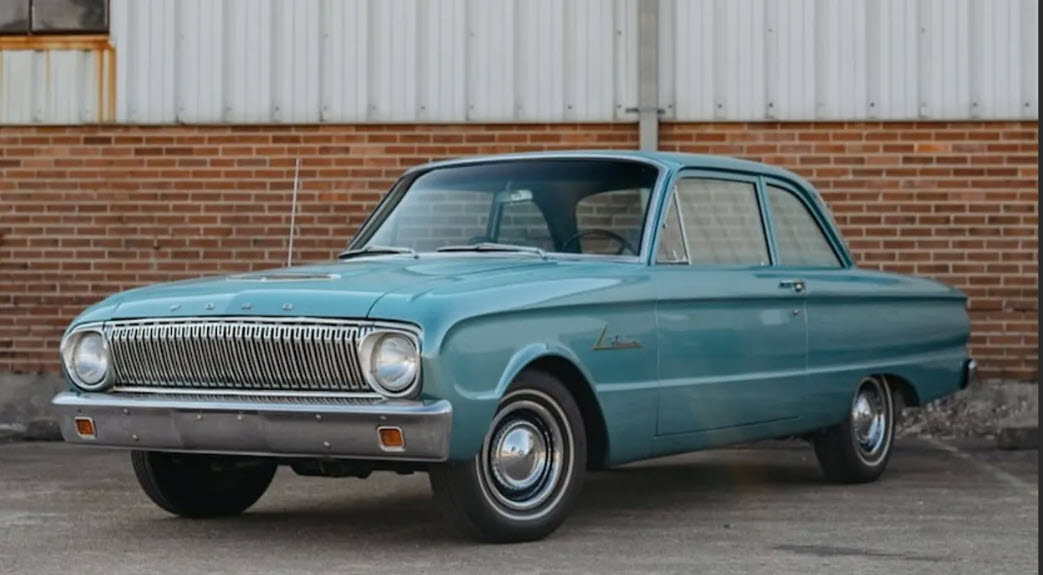
With tire-changing speed being an absolute necessity on the racetrack, the original rear wheel arches were completely unsuitable.
Note the lower body line is not interrupted on the factory body as it is on the Challenger III.
Interior
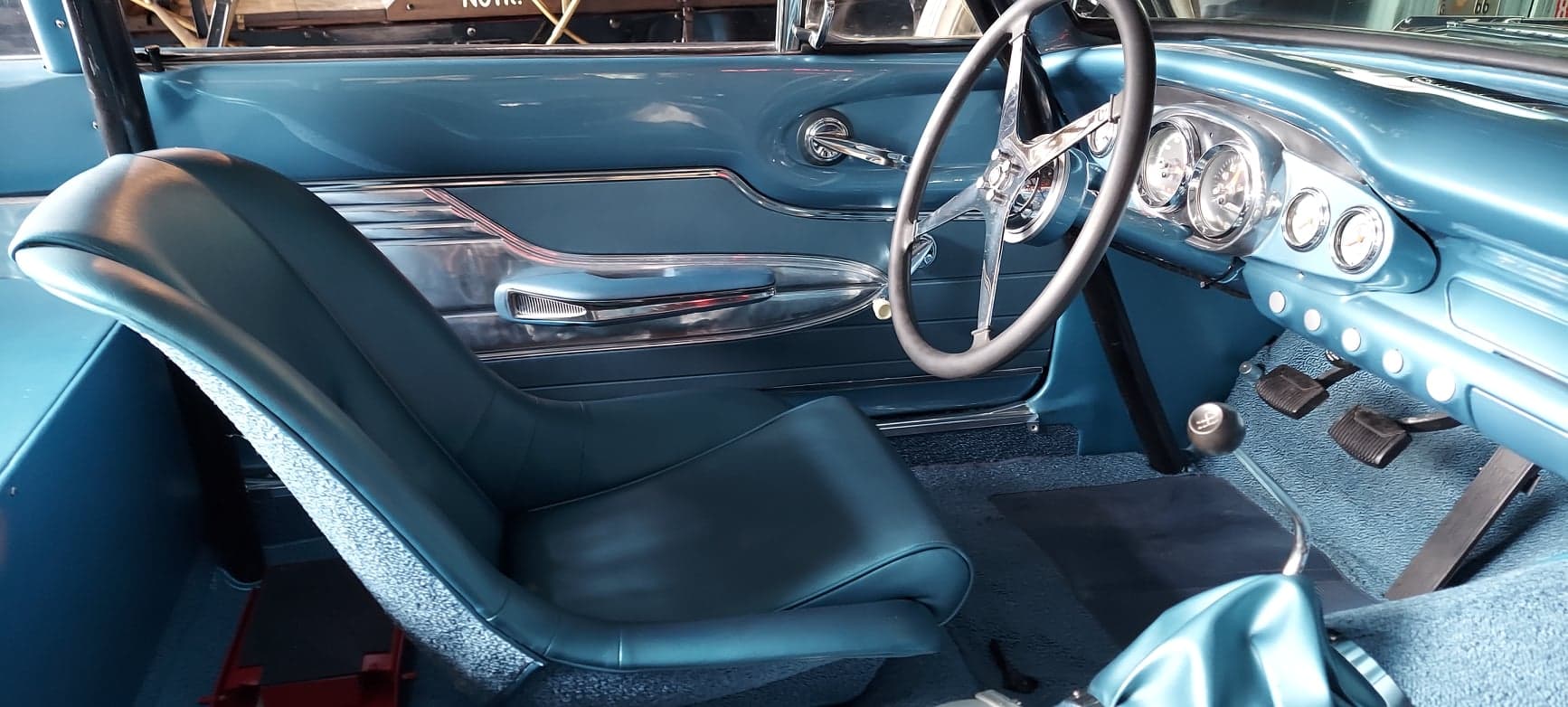
The Falcon Futura's inline 6 cylinder replaced was with a race -tuned Hi Po 289, and it and the Ford 9 inch rear end were both complimented by a Borg-Warner T-10 transmission borrowed from GM as Ford did not have an aluminum trans at the time.
But the drivetrain parts weren't the only the only things 'borrowed' from other car manufacturers.
H/M needed a lightweight racing seat that Ford simply did not have. A receptionist at H/M had a Porsche Speedster as her daily driver, so out came her seats for the Challenger III. I guess she drove her Speedster back home from work on empty milk crates that night!
Let's Go Racing!
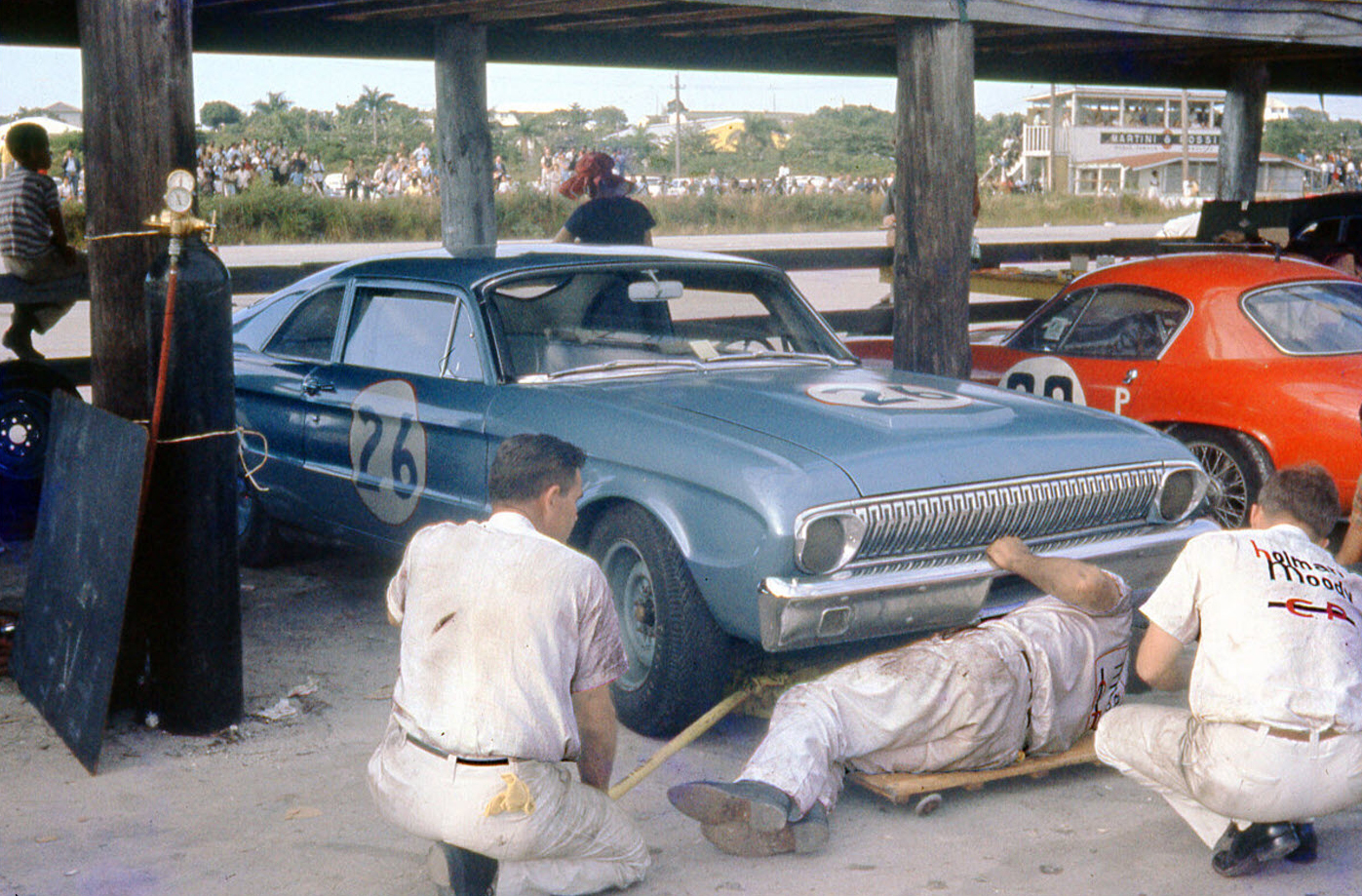
After all the mind-blowing fabrication, Ford and Holman Moody ended up with a truly spectacular Falcon race car. But as stated earlier, the Mustang's insane popularity shortened the race career of the Falcons with one of the few races being run at the Bahamas Speed Weeks on December 2 to December 10, 1962.
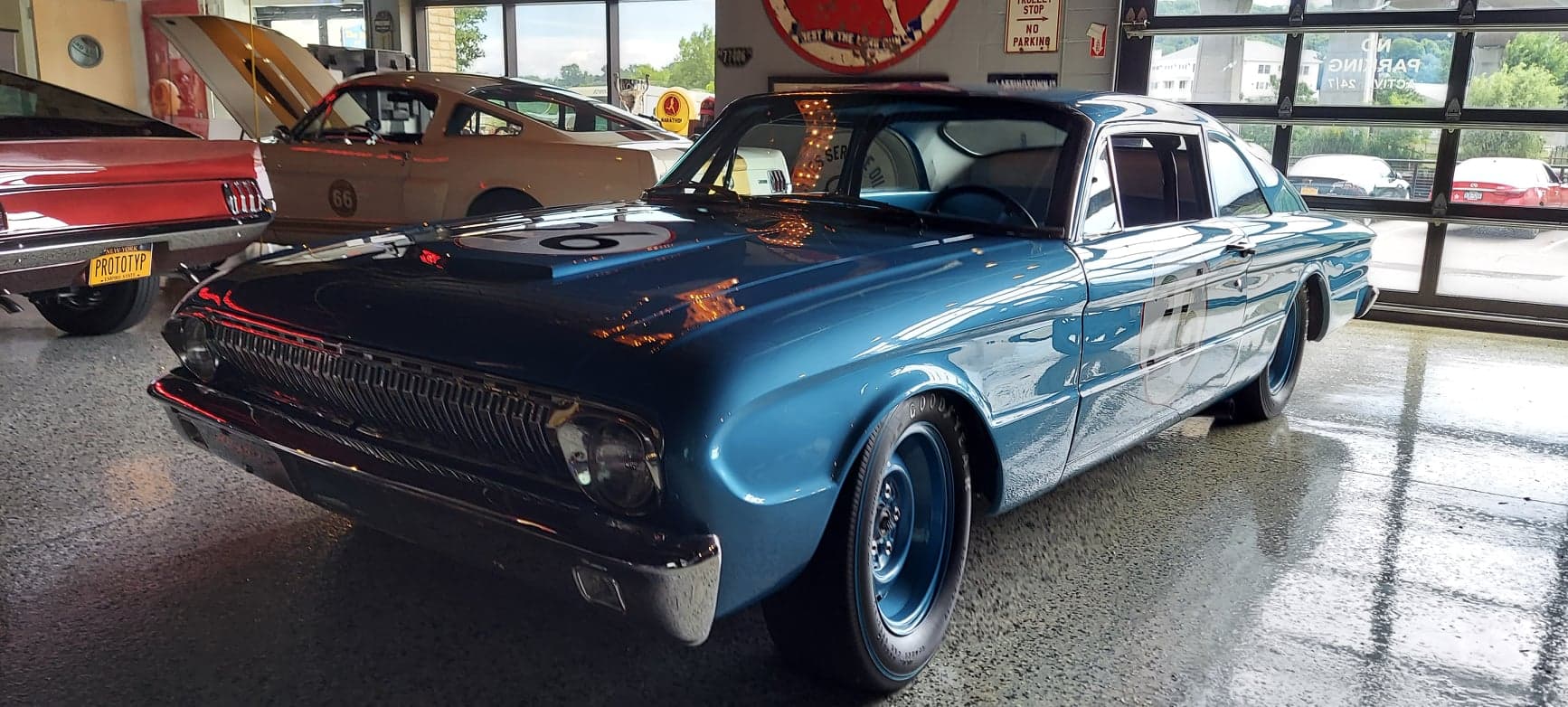
Challenger III now lives its quiet retirement at home at the Waterfront at Roslyn reunited with its Ford Custom Car Caravan show mate, the 1963 Mustang III 'Shorty' prototype.
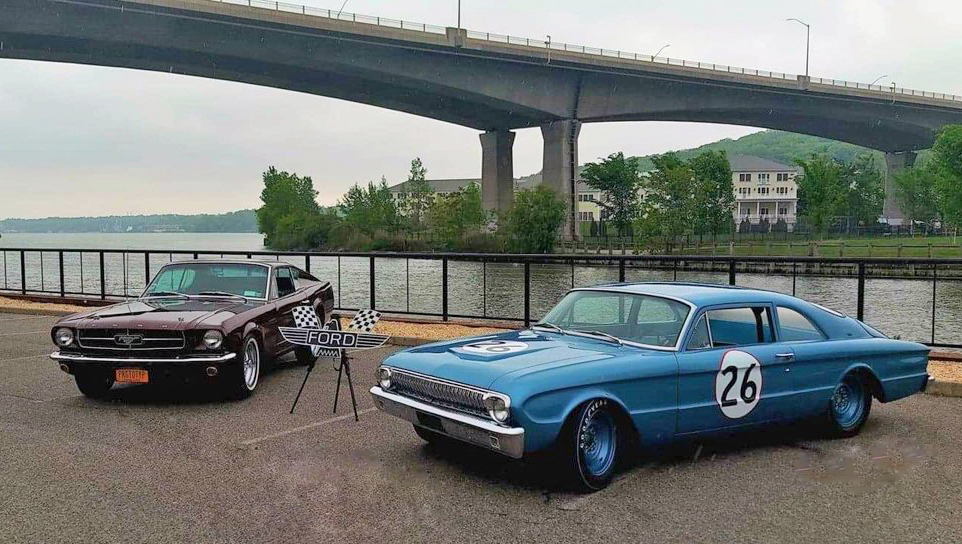

Comments
Greg, Great Post! Love being able to hear about, and more importantly see all the details documenting the construction and alteration of this historic vehicle, especially those hidden away from a spectator’s normal view.
The Falcon was actually the most sedate of the compacts introduced by the Big Three for the 1960 model year. GM had the rear-engined Chevrolet Corvair with its bathtub styling, and Chrysler had the Virgil Exner-designed Plymouth Valiant. That was an amazing transformation to make the Falcon into the Challenger III.